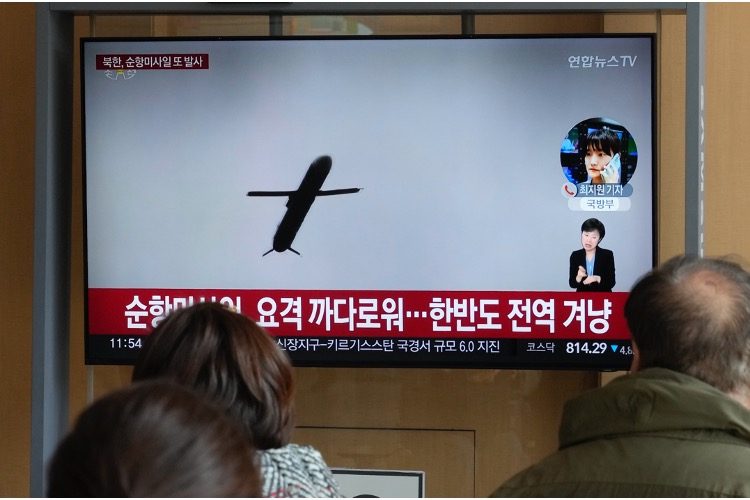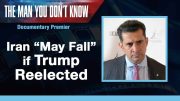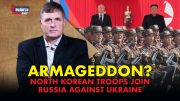
North Korea fired another round of cruise missiles on January 30, Seoul’s military announced, extending a week-long flurry of tests that Pyongyang has said entail a new generation of weapons.
South Korea’s military “detected several unknown cruise missiles launched into the West Sea of North Korea at around 7am,” Seoul’s Joint Chiefs of Staff (JCS) declared in a statement.
South Korean and American intelligence agencies were “conducting a detailed analysis,” the JCS said.
“Our military is cooperating closely with the US while strengthening surveillance and vigilance, and is closely monitoring North Korea’s activities,” it added.
Unlike their ballistic counterparts, the testing of cruise missiles is not forbidden under current UN sanctions on Pyongyang.
Cruise missiles tend to be jet-propelled and fly at a lower altitude than more sophisticated ballistic missiles, making it more challenging to detect and intercept them.
Recent months have witnessed a worsening of ties between the two Koreas, with both sides setting aside key tension-reducing agreements and enhancing frontier security and conducting live-fire drills along the border.
Pyongyang has accelerated weapons testing in the new year, including tests of what it termed as an “underwater nuclear weapon system” and a solid-fuel hypersonic ballistic missile.
On January 29, the North’s state media said North Korean authoritarian leader Kim Jong-un had supervised the test launch of a new strategic cruise missile from a submarine on January 28.
The missile, called Pulhwasal-3-31, is identical to the strategic cruise missiles that the North admitted last week were under development.
State news agency KCNA and the official Rodong Sinmun newspaper said on January 29 that two missiles flew above the sea off the country’s east coast for 7,421 seconds and 7,445 seconds and hit an unspecified island target, indicating the flight time surpassed two hours.
Kim hailed the test as a success, as per reports by KCNA, “which is of strategic significance in carrying out the plan … for modernizing the army which aims at building a powerful naval force.”
South Korea’s military said on January 28 that Pyongyang launched various cruise missiles off its coast but did not elaborate further. On January 29, the South Korean military said the North’s claimed flight time was an exaggeration, saying it monitored the missiles in real time and also downplayed the possibility that they were propelled by solid fuel.
Last week, Pyongyang said it had also conducted its first test of a new generation of strategic cruise missiles.
State media photographs published on January 29 depict a missile launching into a cloudy sky from the water trailed by smoke that obscured the type of platform it was being fired from.
“It is believed that North Korea has commenced mass production of cruise missiles ordered by Russia,” Dr. Ahn Chan-il, a defector-turned-researcher who runs the World Institute for North Korea Studies, told AFP.
Washington and Seoul have slammed the North for supplying Moscow with arms for use in Ukraine, notwithstanding UN sanctions banning any such arrangements.
“It looks like they are conducting … experiments of these [ordered] missiles at sea, causing disruption to South Korea and the United States,” Dr. Anh said, adding that all guided missiles had to undergo a minimum of five tests before being deployed on the battlefield.
In December 2023, Seoul’s spy agency released a statement forecasting that Pyongyang would carry out military and cyber provocations in 2024, targeting election campaigns in the United States and South Korea.
In late 2023, Kim told his aides to “come up with measures to cause a big stir in South Korea early next year,” based on a statement by Seoul’s spy agency.
In recent weeks, Kim also declared the South as his country’s “principal enemy,” ditching agencies dedicated to reunification and outreach and threatening war over “even 0.001mm” of territorial infringement.
The North Korean dictator also said Pyongyang would not acknowledge the two countries’ de facto maritime border, the Northern Limit Line, and called for constitutional changes permitting the North to “occupy” Seoul in war, the state-run KCNA outlet said.
“North Korea seems to indirectly support former US president Donald Trump by emphasizing the shortcomings of South Korea and [the Biden administration’s] policy towards North Korea by increasing tensions on the Korean peninsula,” Professor Yang Moo-jin, president of the University of North Korean Studies, told AFP.
Pyongyang’s latest launch came after South Korea organized a 10-day special forces infiltration drill, which ended on January 25, off the country’s east coast, “in the light of serious security situations” with the North.
On January 18, the White House’s senior director for arms control, Pranay Vaddi, said that the nature of the security threat posed by North Korea could change “drastically” in the coming decade due to Pyongyang’s unprecedented cooperation with Russia. “What we’re seeing between Russia and North Korea is an unprecedented level of cooperation in the military sphere,” he told Washington’s Center for Strategic and International Studies think tank.
“And I say unprecedented very deliberately — we have never seen this before.”
Vaddi added that it was crucial to pay close attention not just to nuclear-armed North Korea’s help for Russia’s actions in Ukraine, mainly in the form of missile systems, but also “what could be going in the other direction as well.”
“How could that improve North Korea’s capabilities? And what does that mean for our own extended deterrence posture in the region with both Korea and Japan?”
He added, “I think the nature of North Korea as a threat in the region could drastically change over the coming decade as a result of this cooperation.”
Additionally, Vaddi said the United States would continue to work with South Korea to ensure that their combined “extended deterrence” was as credible as possible in light of the evolving North Korea threat — an allusion to the U.S. “nuclear umbrella” protecting its allies.
When questioned about concerns that U.S. allies would pursue their own nuclear defense capabilities in the face of the growing North Korean threat, Vaddi said, “We want to make sure that the US nuclear umbrella system as it has existed remains sufficient for deterring threats, including emerging threats that are emanating in Europe and Asia.”
On January 17, Russia said that it was developing its ties with North Korea in all areas, including “sensitive” ones after the North Korean foreign minister conducted rare talks in the Kremlin with Russian President Vladimir Putin, who has been invited to visit the reclusive nuclear-armed country.
Putin has enhanced ties with North Korea since the start of Russia’s military operation in Ukraine in 2022. In turn, Washington has slammed what it claims have been significant North Korean missile deliveries to Russia, amid worries that Russia could be sharing weapons technology with Pyongyang in return.



